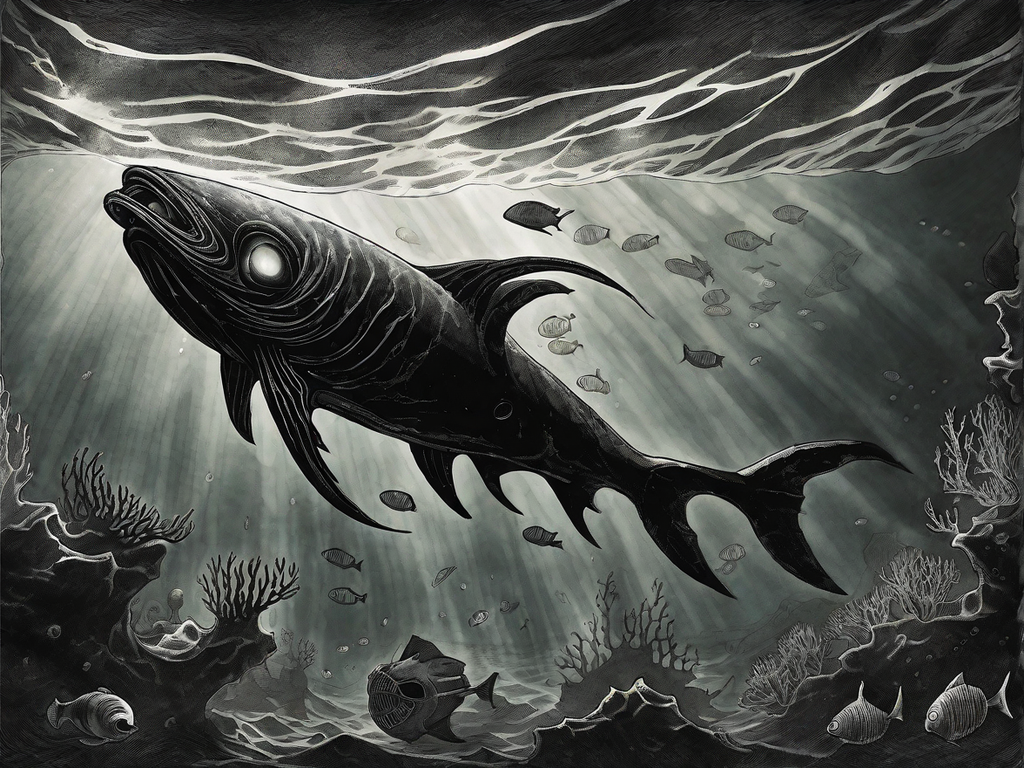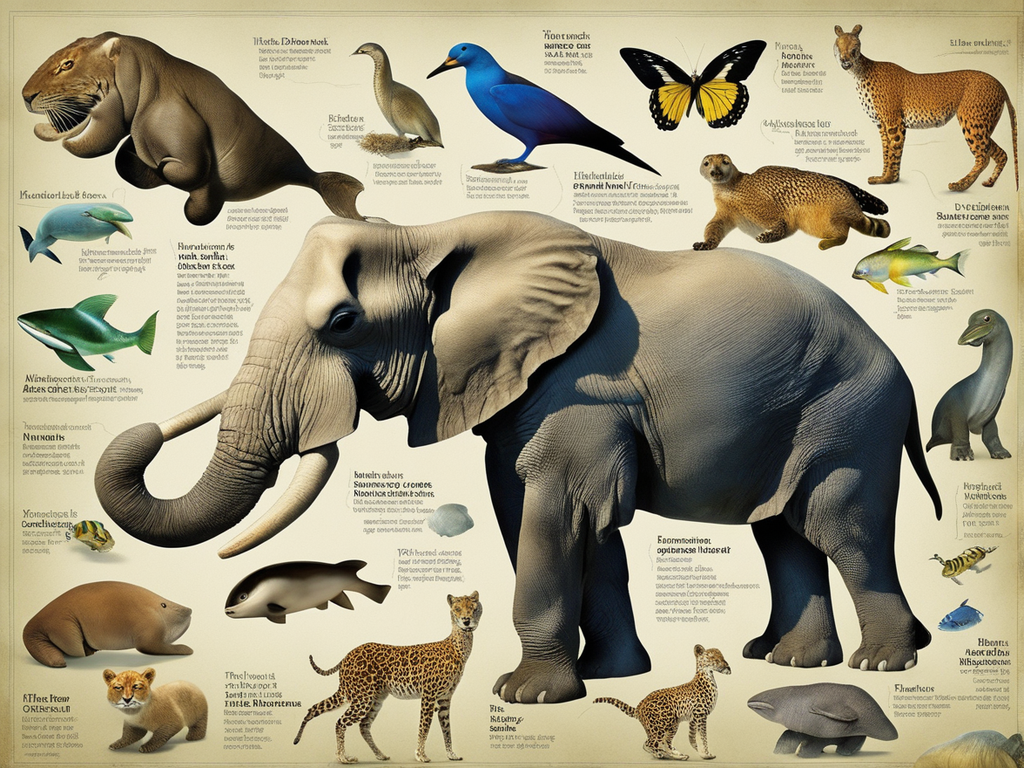Welcome to a journey that celebrates the sensory delights of gastronomy, where the art of taste merges seamlessly with the science of flavor. In this article, we delve into the captivating world of gastronomy, unlocking the secrets that make our taste buds sing and our palates dance with joy. Join us as we unravel the mysteries behind the art of taste and explore the scientific principles that govern this magical realm.
Key Takeaways:
- Discover the intricate mechanisms behind our sense of taste and the primary taste sensations that create a harmonious flavor profile.
- Explore the powerful influence of aromas on taste perception and how chefs use this knowledge to create unforgettable flavor combinations.
- Dive into the world of culinary techniques and learn how chefs elevate the art of taste through various cooking methods.
- Understand the significance of texture in gastronomy and how it contributes to our overall enjoyment of food.
- Uncover the art behind flavor pairing and how it can enhance and elevate the taste of a dish.
The Science Behind Our Sense of Taste
Delve into the fascinating world of taste perception and uncover the intricate mechanisms that allow us to appreciate the flavors of the foods we love. The science of taste explores how our taste buds, located on our tongues and throughout our mouths, work together to decipher the different sensations we experience when we eat.
Our sense of taste is governed by five primary taste sensations: sweet, sour, salty, bitter, and umami. These taste sensations, in combination with our sense of smell, create a rich and nuanced flavor profile.
When we eat, taste molecules from the food we consume interact with the taste receptors on our taste buds. These taste receptors send signals to our brain, allowing us to perceive and differentiate between the various flavors.
Interestingly, our taste buds can adapt and evolve over time. For example, exposure to certain flavors can increase our tolerance for bitterness or sensitivity to sweetness. This adaptability is influenced by genetics, cultural influences, and personal preferences.
Understanding the science behind our sense of taste gives us a deeper appreciation for the art of gastronomy. Chefs and food enthusiasts alike can use this knowledge to create harmonious flavor combinations and design innovative culinary experiences.
“The art of gastronomy is intrinsically linked to the science of taste. By understanding how our taste buds work, we can elevate the flavors and elevate the dining experience.”
The Influence of Aromas on Taste
Discover the powerful connection between aroma and taste and experience how these two senses harmoniously interact to create unforgettable food experiences. The aroma of a dish can significantly influence our perception of taste, enhancing or diminishing its flavors.
When we take a bite of food, our taste buds detect the basic taste sensations, such as sweet, sour, salty, bitter, and umami. But it is the aroma that adds nuance, depth, and complexity to the flavors we perceive. Aromas are detected by our olfactory receptors in the nose, triggering a complex interaction with our taste buds to create a multi-dimensional taste experience.
Imagine savoring a spoonful of decadent chocolate mousse. As it melts in your mouth, the aroma of rich cocoa fills your senses, enhancing the sweetness and richness on your palate. Without the aroma, the taste experience would not be as complete or satisfying.
“The aroma of a dish can transport us to memories, evoke emotions, and even influence our perception of flavor.”
The Science Behind Aroma-Flavor Interaction
The interaction between aroma and taste is rooted in science. When we chew food, volatile compounds are released, carrying the aroma molecules towards the back of our throat and into the nasal cavity. These aroma molecules then bind to olfactory receptors, activating the brain’s perception of flavor.
Research has shown that certain aromas can enhance specific taste sensations. For example, the aroma of citrus can brighten the perception of acidity, while the scent of grilled meat can intensify the perception of umami. On the other hand, unpleasant or conflicting aromas can diminish the taste experience, leading to a less enjoyable meal.
Chefs and culinary experts understand the delicate balance between aroma and taste, using various techniques to create harmonious flavor combinations. They carefully select ingredients that complement each other aromatically, ensuring that the aroma profiles of different components enhance and elevate the overall taste experience.
Creating Memorable Flavor Combinations
One way chefs create unforgettable flavor combinations is through the careful pairing of ingredients with complementary aromas. By combining ingredients that share common aromatic compounds, the flavors are amplified, creating a harmonious symphony of taste.
For example, the aroma compounds found in fresh basil pair beautifully with the sweet, juicy flavors of tomatoes, enhancing the overall taste of a caprese salad. Similarly, the floral notes in vanilla can elevate the flavors of fruits like strawberries or peaches, creating a captivating dessert experience.
To illustrate the power of aroma on taste, refer to the following table showcasing popular flavor pairings and their complementary aromas:
| Flavor Combination | Complementary Aromas |
|---|---|
| Sweet and Spicy | Cinnamon, ginger, cloves |
| Savory and Herbaceous | Rosemary, thyme, oregano |
| Umami and Earthy | Mushrooms, truffle, soy sauce |
| Tangy and Citrusy | Lemon, lime, orange |
When creating a memorable dish, chefs consider not only the taste profile but also the aromatic components of each ingredient, ensuring that they harmonize to create a truly exceptional culinary experience.
Enhancing Taste with Aroma
Understanding the influence of aromas on taste allows us to appreciate food on a deeper level. When we pay attention to the aromas that accompany our meals, we can fully immerse ourselves in the sensory experience and savor each bite.
Next time you sit down for a meal, take a moment to pause and inhale the aroma that swirls around the plate. Notice how it enhances the flavors that await you and adds an extra layer of delight to your dining experience. The interplay between aroma and taste is truly a testament to the artistry and science behind gastronomy.
Exploring Culinary Techniques
When it comes to creating unforgettable flavor experiences, chefs rely on a wide range of culinary techniques that elevate the art of taste. From grilling and braising to sous vide and fermentation, each method brings its own unique characteristics to the table, transforming ingredients into culinary masterpieces.
Grilling, for example, adds a smoky and charred flavor to meats, vegetables, and even fruits, enhancing their natural taste profiles. Whether it’s the caramelization of sugars in a perfectly seared steak or the charred sweetness of grilled peaches, this cooking method creates an irresistible combination of flavors.
Braising, on the other hand, involves slow-cooking meats or vegetables in liquid, infusing them with deep and rich flavors. The low and slow cooking process breaks down tough cuts of meat, resulting in tender and succulent dishes. Additionally, the liquid used in braising, such as stock, wine, or broth, adds complexity to the final dish, making it even more satisfying.
Sous vide, a cooking technique where food is vacuum-sealed and cooked in a temperature-controlled water bath, allows ingredients to retain their natural flavors and textures. By cooking food slowly at a precise temperature, chefs can achieve consistent and evenly cooked dishes with enhanced flavors. This method is particularly popular for cooking proteins like fish and steak to perfection.
Fermentation, an age-old technique, harnesses the power of beneficial microorganisms to transform ingredients. Fermented foods often have complex and tangy flavors that add depth and character to dishes. Think about the sourness of sauerkraut or the umami-packed miso paste – these flavors are a result of the fermentation process.
“Culinary techniques are like a painter’s palette, each brushstroke adding a new layer of flavor, texture, and aroma to the composition. It’s the combination of these techniques that allows chefs to create culinary masterpieces.” – Chef Julia Child
By exploring a diverse range of culinary techniques, chefs can innovate and push the boundaries of taste. Let’s take a closer look at how different cooking methods can transform ingredients and elevate our dining experiences.
| Culinary Technique | Characteristics | Examples |
|---|---|---|
| Grilling | Enhances smoky and charred flavors | Grilled steak, vegetables, fruits |
| Braising | Creates rich and tender dishes | Braised short ribs, pot roast, coq au vin |
| Sous Vide | Ensures precise and consistent cooking | Sous vide salmon, steak, vegetables |
| Fermentation | Develops complex and tangy flavors | Sauerkraut, kimchi, sourdough bread |
The Role of Texture in Gastronomy
Texture plays a vital role in our gastronomic experiences, greatly influencing our overall enjoyment of food. Beyond taste, texture provides a sensory dimension that adds depth and complexity to the culinary creations we savor. From crisp and crunchy to smooth and velvety, the diverse textures found in various cuisines create a symphony of sensations in our mouths.
One of the key elements of texture is mouthfeel. Mouthfeel refers to the physical sensations experienced in the mouth, including the sensations of touch, temperature, and consistency. It is the tactile feedback we perceive when we bite into a juicy steak, slurp a silky soup, or crunch on a perfectly fried piece of chicken.
Chefs understand the importance of texture and utilize it as a powerful tool to enhance our dining experiences. They play with contrasting textures to create harmonious combinations that surprise and delight our palates. For example, a delicate mousse paired with a crunchy praline provides a juxtaposition of smoothness and crispness, creating an exciting interplay of textures.
Exploring Textures in Gastronomy
The world of gastronomy offers an array of textures that arouse our senses and tantalize our taste buds. Let’s take a closer look at some common textures found in different cuisines:
- Crunchy: Think crispy fried foods, toasted nuts, or fresh vegetables with a satisfying crunch.
- Creamy: Velvety sauces, silky custards, and smooth ice creams provide a luxurious and indulgent mouthfeel.
- Chewy: From a perfectly cooked steak to a deliciously dense bagel, chewy textures add a satisfying resistance and depth to dishes.
- Crisp: Delicate, flaky pastries and crackling potato chips offer a light and airy texture that contrasts with soft components.
- Gooey: Think ooey-gooey melted cheese or a luscious molten chocolate lava cake that seductively coats the palate.
These are just a few examples of the myriad textures that chefs expertly incorporate into their culinary creations, making each bite a multi-sensory experience.
Textures in Gastronomy
| Texture | Cuisine Examples |
|---|---|
| Crunchy | Fried tempura, crispy fried chicken, toasted almonds |
| Creamy | Smooth mashed potatoes, velvety chocolate mousse, silky caramel |
| Chewy | Tender beef jerky, chewy bagels, delectable caramel candies |
| Crisp | Flaky croissants, crispy fish and chips, crumbly pie crust |
| Gooey | Melting cheese on pizza, molten chocolate lava cake, soft caramel |
As you can see from the table, different cuisines offer a wealth of textures that add excitement and complexity to the dining experience. Chefs skillfully balance textures to create dishes that are not only visually appealing but also invigorating to the senses.
Texture is the silent protagonist in the art of taste, complementing flavors and providing a tactile journey that elevates our dining experiences.
The Art of Flavor Pairing
Flavor pairing is an intricate art that involves combining complementary flavors to create a harmonious and delightful taste experience. The right combination of flavors can elevate a dish from good to extraordinary, tantalizing our taste buds and leaving a lasting impression.
When it comes to flavor pairing, chefs draw inspiration from a myriad of sources, including traditional culinary practices, cultural influences, and creative experimentation. They carefully consider the individual characteristics of different ingredients and seek to find the perfect balance between contrasting and complementary flavors.
One classic example of a complementary flavor pairing is the combination of sweet and salty. This pairing creates a delightful contrast that enhances both flavors in a dish. Think of the irresistible combination of salty caramel or a delicious prosciutto-wrapped melon – the contrasting flavors create a symphony of taste that is simultaneously sweet and savory.
Chefs also experiment with unique and unexpected flavor combinations to create innovative and memorable culinary creations. The art of flavor pairing often involves pushing boundaries and thinking outside the box. By combining flavors that may seem unconventional at first glance, chefs can create a new sensory experience that surprises and delights diners.
“Flavor pairing is like a puzzle, where each ingredient is a piece that contributes to the overall picture. By understanding the nuances of each flavor and how they interact with one another, chefs can create unforgettable culinary masterpieces.”
To give you a taste of the endless possibilities of flavor pairing, here’s a simple table showcasing some classic combinations:
| Flavor Combination | Description |
|---|---|
| Sweet and Spicy | The combination of sweetness and spiciness adds complexity and depth to a dish. Think of a sweet and spicy Thai chili sauce. |
| Tangy and Creamy | A tangy component, like citrus or vinegar, can balance out the richness of creamy ingredients such as cheese or avocado. |
| Herbaceous and Citrusy | Combining fresh herbs, such as basil or mint, with citrus flavors, like lemon or lime, creates a bright and refreshing taste profile. |
| Umami and Earthy | Umami-rich ingredients, such as mushrooms or soy sauce, pair beautifully with earthy flavors like truffle or roasted root vegetables. |
As you can see, the art of flavor pairing is a dynamic and creative process that involves understanding the characteristics and interactions of different flavors. By exploring and experimenting with flavor combinations, chefs can create culinary experiences that are truly unforgettable.
The Impact of Presentation on Perception
When it comes to gastronomy, visual appeal plays a crucial role in influencing our perception of taste. The way a dish is presented can evoke anticipation and excitement, setting the stage for an unforgettable dining experience. Chefs around the world employ various plating techniques to create visually stunning presentations that not only stimulate our eyes but also enhance the overall enjoyment of the meal.
From the meticulous arrangement of ingredients to the careful selection of servingware, every detail is thoughtfully considered to create a feast for the senses. The visual cues provided by the presentation of a dish can shape our expectations, intensify flavors, and even influence our perception of taste.
Take, for example, the art of layering flavors. By using different colors and textures, chefs can build a visually appealing composition that entices us to explore the dish further. The strategic placement of components can create a balance of flavors, ensuring that each bite is harmonious and satisfying.
“The art of plating is like telling a story on a plate. It’s about creating a visual narrative that speaks to the flavors and textures of the dish, enticing the diner to embark on a culinary adventure.”
Plating Techniques That Elevate the Dining Experience
Chefs employ various plating techniques to enhance the visual appeal of their creations. Each technique is carefully selected to complement the dish’s flavors, textures, and overall concept. Here are a few commonly used plating techniques:
- Minimalist Plating: This technique focuses on simplicity, using negative space to highlight the main components of the dish. It allows the flavors to take center stage while providing an elegant and clean presentation.
- Layered Plating: By stacking or layering ingredients, chefs create visually striking compositions that showcase the different elements of the dish. This technique adds depth and complexity to the presentation.
- Deconstructed Plating: Deconstructed plating breaks down a dish into its individual components, placing each element separately on the plate. This technique allows the diner to appreciate the flavors and textures of each ingredient.
These are just a few examples of the countless plating techniques that chefs employ to create visually stunning presentations. The artistry and creativity involved in the presentation of a dish add an extra layer of excitement and anticipation to the dining experience, enhancing our overall enjoyment of the meal.
The Role of Seasonality in Gastronomy
Seasonality plays a crucial role in the world of gastronomy, shaping the culinary landscape and inspiring chefs to create dishes that celebrate the best flavors each season has to offer. By utilizing seasonal ingredients, chefs can elevate their creations, resulting in dishes that are bursting with freshness, taste, and vitality.
The farm-to-table movement is at the forefront of embracing seasonality in gastronomy. Emphasizing locally sourced produce, this movement prioritizes sustainability and supports local farmers. By using ingredients that are grown and harvested at the peak of their season, chefs can work with the freshest and most flavorsome produce, resulting in dishes that truly showcase the essence of the season.
“When you work with seasonal ingredients, you are working with nature at its finest, and that’s when the magic happens.”
– Chef Alice Waters
By using seasonal ingredients, chefs tap into the natural rhythms of the Earth, connecting their culinary creations to the ebb and flow of nature’s bounty. This not only enhances the taste and quality of the dishes but also promotes a more sustainable and environmentally conscious approach to gastronomy.
Here is an example of how seasonality can inspire a farm-to-table dish:
| Seasonal Ingredient | Featured Dish |
|---|---|
| Spring Asparagus | Roasted Asparagus Salad with Lemon Vinaigrette |
| Summer Tomatoes | Heirloom Tomato Caprese Salad |
| Fall Butternut Squash | Butternut Squash Soup with Apple Cider Reduction |
| Winter Root Vegetables | Roasted Root Vegetable Medley with Herbed Butter |
In this example, each dish showcases a seasonal ingredient paired with complementary flavors to create a harmonious and delicious culinary experience.
Embracing seasonality in gastronomy not only allows us to savor the freshest flavors but also encourages a deeper connection to the natural world and the cycles of life. By appreciating the bounty of each season and supporting local farmers, we can embark on a gastronomic journey that is abundant in taste, sustainability, and cultural significance.
Exploring Global Culinary Traditions
Embark on a tantalizing journey around the world as we explore the diverse culinary traditions that have shaped global gastronomy. From the spice-infused cuisines of Asia to the mouthwatering flavors of Europe and the vibrant taste profiles of Latin America, prepare to be captivated by the richness and variety of culinary traditions across the globe.
The Spicy Cuisines of Asia
Asia is renowned for its bold and aromatic dishes that tantalize the taste buds. From the fiery curries of India to the complex flavors of Sichuan cuisine in China, experience a symphony of spices and herbs that ignite the senses.
The Rich Flavors of Europe
Europe boasts a remarkable gastronomic heritage that has shaped culinary traditions worldwide. Indulge in the creamy cheeses of France, savor the smoky flavors of Spanish tapas, and discover the delicate art of pasta-making in Italy. Each European region offers a unique culinary experience, celebrating the flavors of the land and sea.
The Vibrant Taste Profiles of Latin America
Latin American cuisine is a vibrant tapestry of flavors, combining indigenous ingredients with influences from Spanish, African, and Caribbean cultures. From the tangy ceviches of Peru to the hearty stews of Mexico and the succulent grilled meats of Argentina, immerse yourself in the bold and diverse tastes of this passionate region.
“Food is the universal language that bridges cultures and brings people together. Through the exploration of culinary traditions, we gain a deeper understanding and appreciation for the world’s rich tapestry of flavors.”
– The Art of Taste Magazine
As we travel across continents, it becomes evident that culinary traditions not only nourish our bodies but also serve as a reflection of cultural heritage and identity. The art of taste unites people from different backgrounds, transcending language barriers and fostering connections through the universal pleasure of food.
| Continent | Cuisine Highlights |
|---|---|
| Asia | Firy curries of India, complex flavors of Sichuan cuisine in China |
| Europe | Creamy cheeses of France, smoky flavors of Spanish tapas, delicate art of pasta-making in Italy |
| Latin America | Tangy ceviches of Peru, hearty stews of Mexico, succulent grilled meats of Argentina |
Embarking on a culinary journey that celebrates global gastronomy is an invitation to expand our palates, embrace diversity, and cultivate a deeper appreciation for the art of taste. It is through the shared experience of culinary traditions that we discover the true power of food to unite and inspire.
The Art of Food and Wine Pairing
Enhance your dining experience by mastering the art of food and wine pairing. Understanding the complementary relationship between different types of food and wine can elevate your taste sensations to new heights. By following the principles of flavor matching and exploring the nuances of wine selection, you can create perfect pairings that harmonize flavors and tantalize the palate.
Principles of Flavor Matching
When it comes to food and wine pairing, the key is to find complementary flavors that enhance each other. Consider the intensity, acidity, and sweetness of both the dish and the wine. For example, a light-bodied white wine works well with delicate seafood dishes, while a bold red wine pairs beautifully with rich, savory meats.
“The harmonious interplay of flavors between a well-paired dish and the right wine can elevate the dining experience to extraordinary levels.”
Exploring Wine Selection
Choosing the right wine for your meal can greatly enhance the flavors and overall enjoyment of the dish. Consider the dominant flavors and characteristics of the food, such as sweetness, acidity, or spiciness, and select a wine that complements or contrasts with those elements. Experiment with different varietals, such as Chardonnay, Pinot Noir, or Syrah, to find the perfect match for your meal.
| Food | Wine |
|---|---|
| Grilled salmon | Chardonnay |
| Filet mignon | Cabernet Sauvignon |
| Spicy Asian cuisine | Riesling |
| Roasted chicken | Pinot Noir |
Remember, finding the perfect food and wine pairing is subjective, and personal preference plays a significant role. Enjoy the process of tasting and experimenting to discover your own favorite combinations. Cheers to the art of food and wine pairing!
The Science of Molecular Gastronomy
Delve into the captivating world of molecular gastronomy, the intersection where science and cuisine merge to create extraordinary culinary experiences. With innovative cooking techniques and the application of scientific principles, molecular gastronomy pushes the boundaries of taste, transforming familiar dishes into avant-garde creations that delight the senses.
Exploring Innovative Cooking Techniques
At the core of molecular gastronomy lies a passion for experimentation and pushing the limits of what is possible in the kitchen. Chefs harness the power of advanced scientific equipment and techniques to transform ingredients in ways never seen before. From the use of liquid nitrogen for rapid cooling to spherification, encapsulating liquids in gelatinous spheres, these innovative methods create visually stunning and texturally captivating dishes.
The Role of Scientific Principles
Scientific principles, such as the understanding of chemical reactions and the behavior of molecules, play a crucial role in molecular gastronomy. By applying this knowledge, chefs can manipulate ingredients at a molecular level, altering their properties and creating entirely new taste experiences. For example, the use of emulsifiers allows for the creation of stable foams and suspensions, while the precise control of temperature and pressure unlocks new textures and flavors.
“Molecular gastronomy allows chefs to explore new realms of flavor, texture, and presentation, creating culinary masterpieces that defy convention.”
Collaboration Between Science and Culinary Arts
Molecular gastronomy is a multidisciplinary field that encourages collaboration between chefs and scientists. By combining their expertise, they can unravel the intricacies of taste and create truly groundbreaking dishes. Chefs draw inspiration from scientific research to unlock new flavor combinations and experiment with unconventional ingredients, while scientists gain insights into the sensory perception of food through this innovative approach.
The Future of Molecular Gastronomy
As molecular gastronomy continues to evolve, the possibilities for culinary exploration are endless. With advancements in technology and a growing understanding of the science behind flavor, we can expect to see even more daring and imaginative dishes gracing the tables of fine dining establishments. The marriage of science and cuisine in molecular gastronomy paves the way for a future where culinary boundaries are surpassed, and gastronomic experiences reach new heights.
| Innovative Cooking Techniques | Scientific Principles |
|---|---|
| – Sous vide cooking | – Understanding of chemical reactions |
| – Spherification | – Control of temperature and pressure |
| – Foams and suspensions | – Manipulation of ingredients at a molecular level |
| – Rapid cooling with liquid nitrogen | – Use of emulsifiers |
The Future of Gastronomy
The art of taste is constantly evolving, and the future of gastronomy holds exciting possibilities. As we seek to create culinary experiences that are not only delicious but also sustainable, new trends and innovations are shaping the way we approach food.
One of the major culinary trends on the horizon is the increasing popularity of sustainable practices. Chefs and food enthusiasts alike are embracing a farm-to-table philosophy, prioritizing locally sourced ingredients and reducing the carbon footprint of their dishes. This shift towards sustainability not only promotes environmental responsibility but also delivers fresher, more flavorful meals.
Another significant trend in gastronomy is the rise of plant-based cuisine. As more people opt for vegetarian and vegan lifestyles, chefs are exploring the vast array of flavors and textures that plant-based ingredients have to offer. From innovative plant-based protein substitutes to creative vegetable-based dishes, the future holds a multitude of exciting options for those seeking meat-free alternatives.
Cutting-edge technologies are also shaping the future of gastronomy. From advanced cooking techniques to molecular gastronomy, chefs are pushing boundaries and creating unique experiences. Technology allows for precise control over flavors, textures, and presentation, enabling chefs to create dishes that are not only delicious but also visually stunning.




































